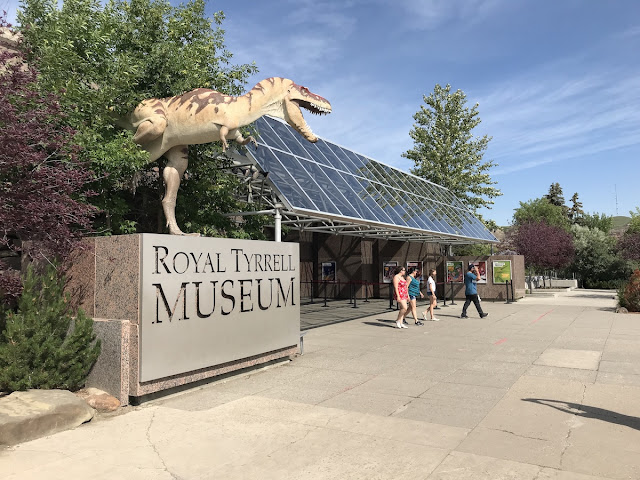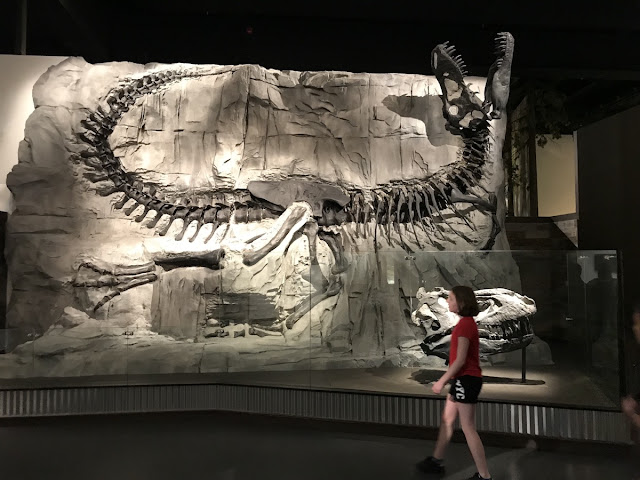The Alberta prairies stretch forever and I had a sense of the huge size of the North American continent. Underneath the prairies are Later Cretaceous sediments.
Everything in Drumheller is about Late Cretaceous dinosaurs!
The Royal Tyrrell Museum is like nothing else. Established in 1985 and given the designation "Royal" in 1990, it is named after Joseph Burr Tyrrell a paleontologist who discovered the first dinosaur in the Red Deer Valley in 1882 while searching for coal seams.
The entrance has "fleshed out" dinosaurs. This one is Albertosaurus, the one discovered by Tyrrell in 1884.
I was especially impressed with how the opening hall of the exhibit space had such clear and concise descriptions of how science operates. It was as if they expected visitors to be suspicious of what these fossils represent. Explained clearly, it was obvious that there is a method to understanding the past. Very well done!
There are three rock units exposed in the Red Deer River Valley. From bottom to top they are the Oldman Formation, The Dinosaur Park Formation and the Bearpaw Formation. They are mostly fluvial deposits that are between 77 and 74.5 million years old, originating as debris shed off of the thrust and fold belt to the west, into the foreland basin of the modern day prairies. They form these quite colorful badlands.
The Museum claims to have 130,000 fossil specimens...
... and the storage space (rear) vastly outsizes the exhibit space.
Portals announce which era or time period you are about the enter.
There are signs located appropriately at each extinction event (end Ordovician, Devonian, Permo-Triassic, Jurassic, and end Cretaceous. They are really informative.
Of course, the Mesozoic features prominently in this museum.
Note the scale of this beast.
The fossils take center stage with life paintings filling out the scene behind them.
A view of Jurassic Alberta.
Jurassic Alberta, is outlined unblock (near center) with Drumheller as the red dot
There is a greenhouse in the museum with living examples of ancient plants.
Inside the Cretaceous Garden.
This ceratopsian dinosaur represents just one of the many species in this group that are pulled from these beds. They underwent major evolutionary changes in a short two million year period.
This is Horseshoe Canyon located between Drumheller and Calgary. One drives across fields of canola and alfalfa that are green and gently rolling before the rivers carve into the underlying strata.
Downtown Calgary and its famous tower as viewed south down Center Street. Let the Northern Rockies trip begin.




















No comments:
Post a Comment
If your comment will not post, email me with the problem.